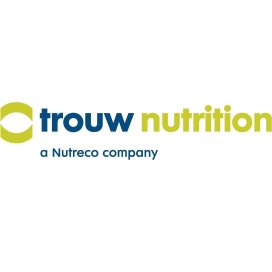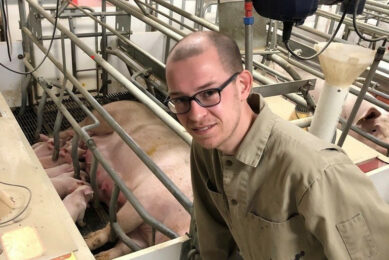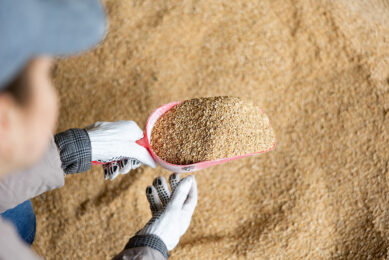Adding value with digital services for feed professionals
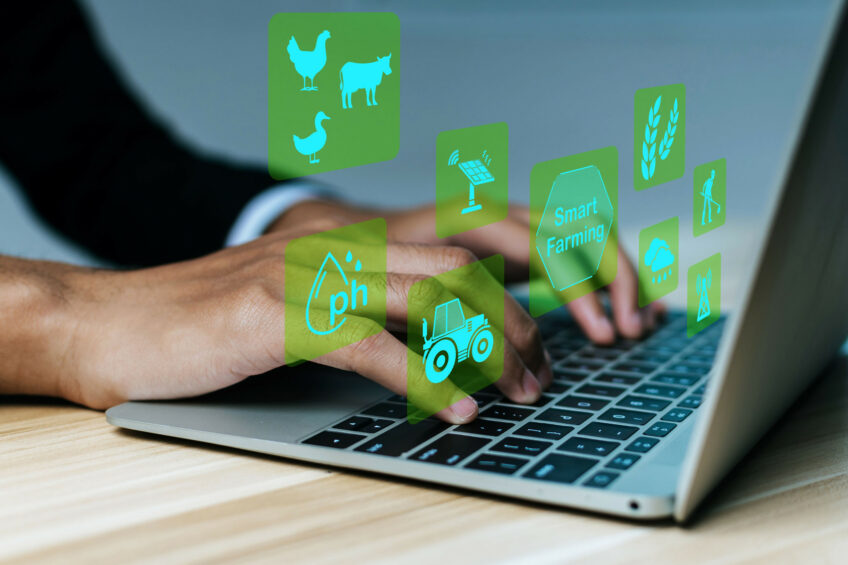
The uptake of digital technologies used to be low in agriculture, but it is catching up fast and setting the feed sector in motion. Casper Niesink, Director Global Solutions & Services at Trouw Nutrition, explains what it takes to be a data-driven animal nutrition company.
Over the last few years, several reports have been published about the state of digitalisation in agriculture. McKinsey & Company published quite a few of them and have relentlessly addressed the need to embrace digital technologies by saying: “One of the oldest industries must embrace a digital, connectivity-fuelled transformation in order to overcome increasing demand and several disruptive forces, while also pushing toward more sustainable practices.” While we see that digitalisation adoption is on the rise in agriculture, attention must be made to which routes to take here. The key to success is having products that solve problems, as stated by Lux Research earlier this year. To do this, it is important to “integrate solutions that are often siloed and standardise data formats so that different data systems can talk to each other. Also, the solutions must be user-centric designs that are scalable and flexible, with assurance of data privacy and security.”
Getting the fundamentals in place
For animal feed companies, digitalisation is becoming a growing part of the company strategy and serves as a perfect opportunity to break down silos and better integrate proven solutions (such as compound feed, premixes, and feed additives) with novel digital solutions. This will create a more complete offering, which is needed to solve the complex issues we deal with in animal nutrition and livestock today. Casper Niesink, who leads the Global Solutions & Services team at Trouw Nutrition explains: “We see that customers need us more than ever when it comes to novel issues and challenges such as carbon footprinting of complete feed, raw materials, and end-products or the increased feed quality concerns we see popping up due to climate change. To partner on these complex issues with our customers requires having access to the right data, but also be smart about how we can develop tools around this data.”
We recently developed a central (in-house) database where all relevant data – from both internal and external data sources – come together” – Casper Niesink, Director Global Solutions & Services
Internal and external data sources
Trouw Nutrition started its data-driven route quite some years ago with a clear vision, innovation strategy and dedicated team. This enabled the company to get the fundamentals in place. Niesink: “To decide where to spend our time and money on it is important to know how digitalisation will (most possibly) affect the daily workflow and processes of nutritionists, farmers, and consultants in the future. Some tasks are very well suited to be fully replaced by technology, while some (more complex, strategic) tasks will be better suited to have technology as a powerful assistant (co-pilot).” This requires market research and talking to customers, but also have your ‘data house’ in order. A major step for the company on this route was the recently developed central (in-house) database where all relevant data – from both internal and external data sources – has been brought together. Niesink explains: “At Trouw Nutrition we have a wealth of data, coming from our validation farms, formulation software, nutritional database, NIR and mycotoxins samples, and other NutriOpt solutions.However, the amount and complexity of all this data can be overwhelming, which may prevent optimal use of all the valuable information we have available. Having this database supports easier access, optimal aggregation, and better use and monatisation of all the livestock related data for our customers.”
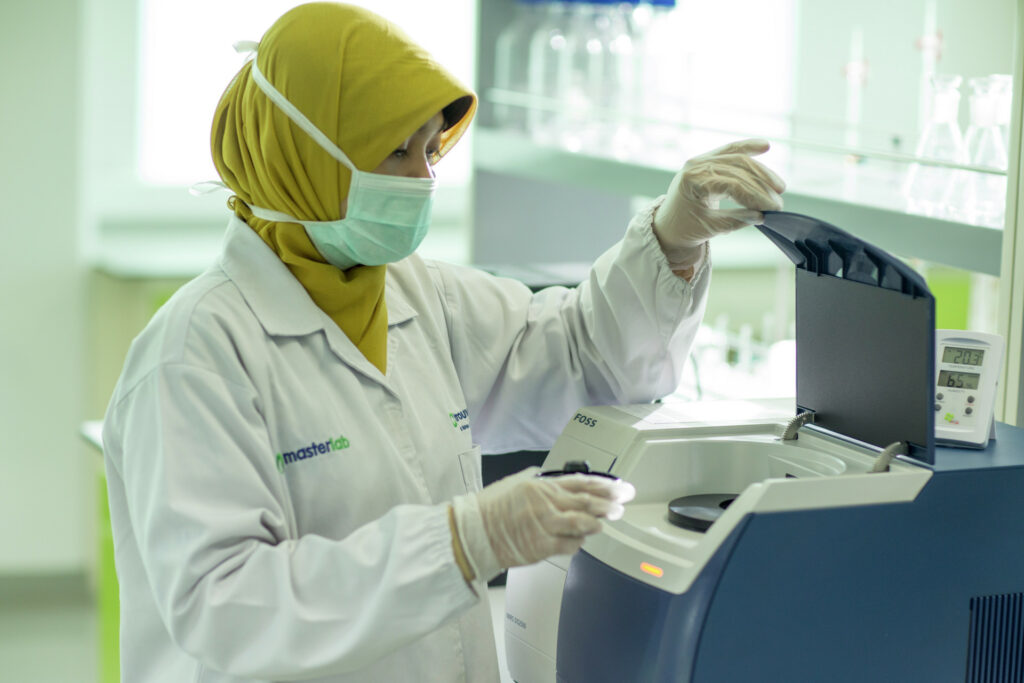
Translating a vision into market solutions
Having the fundamentals in place – such as the central database – is crucial for being a data-driven company. Additionally, combined with market research and monitoring, and listening to customers from around the world, has led to many tangible digital products and solutions to date. In 2023 and 2024, the company brought a significant number of new digital solutions to market and keeps updating these with new features and data, and improvements around usability, ease of use, and speed, among others. Niesink explains: “Trouw Nutrition is well-known for its nutritional expertise and formulation skills, our NIR offering and Masterlab(s), and our global network and reach. Combining these key areas of expertise with a digital offering that taps into new challenges around feed quality and reducing the environment footprint among others, defines our mission to become the leading partner in nutritional and functional solutions for sustainable farming. The reputation we have for our existing brands and the strong relationship with our clients help us to drive the adoption of these new digital solutions we are bringing to market.”
Fine-tuning NIR for different animal species
Niesink’s team is carefully listening to the market needs of customers, which has made them decide to fine-tune the NutriOpt On-site Adviser for different animal species. This mobile NIR solution is increasingly used by feed millers and farmers and almost every 10 seconds, a NIR scan is made, and the data goes into our database (based on Trouw Nutrition data from Q1, 2024). Niesink: “The amount of NIR data we have available is huge and very valuable. We offer high-quality calibration lines for 50+ raw materials, 10 silages and 5+ finished feeds. We are fine-tuning how we can show the data to our customers. This is because the data needed regarding nutrients and raw materials are different for poultry, pigs, and dairy cows when it comes to what is needed for formulation and optimising diets. When scanning a sample, you only want to see what is relevant for you in the reports created. I strongly believe that digital tools should be as easy and as clear as possible. This is why we have recently fine-tuned the offering and made it more species-specific. We have also fine-tuned our digital sustainability services for different animal species such as dairy, pigs and poultry.” In addition, Niesink addresses that it is important to make the value of a digital product as tangible as possible. “For example, due to more accurate nutritional values of raw materials measured with our mobile NIR solution, the formulation can be optimised in such a way that it leads to significant feed savings. We are talking about up to tens of thousands of euros per month that can be saved, as shown by our calculations done at real farms.”
Role of Artificial Intelligence for animal feed
Data capture and data use is one thing, but true digital disruption and efficiency gains are said to be excepted from Artificial Intelligence (AI). Although we are just scratching the surface of the capabilities of AI for agriculture, what will that mean for the digital solutions that Trouw Nutrition can offer customers? “What we expect is that AI will play a multifaceted role in animal nutrition. It can automate routine tasks such as data entry, calculations, and report generation. In addition, the ability of AI to analyse vast amounts of data has enormous potential to create even more value from our central database for example. I also foresee that AI will optimise our animal models even further to become even more predictive and smart, reducing feed losses, calculating optimal market strategies, and tailor-made diets for different age groups for example. While AI will not replace human expertise, it will become an invaluable tool to take precision nutrition and sustainable farming to the next level. But first we want to focus on rolling out our digital products and solutions to more regions and start developing new innovations for the next generation feed professional. This is how we add value and become the leading partner in nutritional and functional solutions for sustainable farming. Our built-up digital expertise and our large portfolio of digital solutions fuel this mission and have become an integral part of our business,” Niesink concludes.
Want to learn more about the digital portfolio of Trouw Nutrition, take a look here.
Author: Emmy Koeleman


